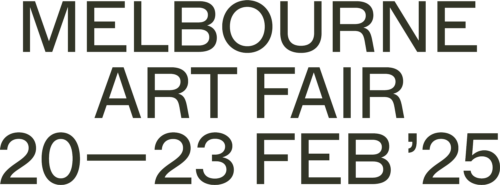Jazz Money On The Power Of Poetry In Non-Traditional Forms
Jazz Money (b. 1992, Wiradjuri) is an artist, poet and filmmaker. Their cross-disciplinary practice speaks to language, narrative and First Nations’ legacies of place.
Jazz is currently exhibiting at the 18th Adelaide Biennial of Australian Art: Inner Sanctum until 2 June with their work, This is how we love. In collaboration with members of the Sydney Gay & Lesbian Choir, they transform the poem and vocal arrangement into a multichannel sound installation. Melbourne Art Fair spoke with Jazz about their practice, and their neon installation work which was created for the BEYOND sector, curated by Shelley McSpedden and presented by The Commercial (Gadigal Country/Sydney) at the Fair last month.
Although your practice is centred in poetics, you work widely with visual art, film, audio and performance. How has your practice evolved to arrive at this multidisciplinary point? Have you always been drawn to creating works through a range of mediums?
I originally trained as a film maker and have a particular love of film editing. I think that interest in the way that image, story and form meet really informs my poetry practice. In particular, I really enjoy thinking about the way that poetry can be used as an access point for subtext in physical environments and built world settings.
I’m really fascinated by the ways that poetry allows us to see and understand the world. Poetry has the ability to hold together the very complex and the very simple in ways that can reveal our world anew. As a Wiradjuri person I see poetry as an extension of the oral tradition that has always existed on this continent, and I’m curious about the multitudes of form that form can take.
 Jazz Money, infinite iterative piece, 2023, three-channel digital video with sound, video infinite duration, audio 9:25 duration, installation view Between Waves, ACCA, Melbourne, 2023 (photo: Andrew Curtis). Courtesy the artist and The Commercial.
Jazz Money, infinite iterative piece, 2023, three-channel digital video with sound, video infinite duration, audio 9:25 duration, installation view Between Waves, ACCA, Melbourne, 2023 (photo: Andrew Curtis). Courtesy the artist and The Commercial.
Can you describe your creative process – how do you go from ideation to a completed artwork? How do you decide which medium is best to convey a certain idea or feeling?
I typically begin by thinking about the purpose of a piece, what it’s trying to achieve intellectually and emotionally, and from there find the medium that makes sense. There are mediums I’m comfortable in and others I’m curious about, but it’s all form as function in poetry, so I try to be situated in that thinking.
Your work has been described as “an energetic vessel for the oral tradition of story-telling of First Nations cultures, which over millennia has been the living instrument of care on and for this continent”. How do you interrogate the meanings associated with First Nations legacies, narrative and storytelling within your work and your efforts in continuing the traditions of your Wiradjuri culture?
I exist in the world as a Wiradjuri person and make all my work from that positionality. I’m curious about the intersecting legacies that inform our current reality, and I see those intersections from a queer Wiradjuri lens. I see my role, and the role of poetry and art more broadly, as something that is in dialogue and disruption with systems of power, a way to offer complexity and beauty while speaking back dominant narratives. I am less interested in interrogating First Nations legacies as I am with honouring the systems that have kept Country and all its inhabitants cared for since the first sunrise.
Your work for BEYOND at Melbourne Art Fair titled Three Pieces of Light uses poetry and transforms it into a large-scale piece. Can you describe the work and how visitors at the Fair might experience its monumental presence?
Three Pieces of Light is a poetic intervention that uses neon text to invite audiences on a journey through fragmented lines of poetry. The three short lines of text are scattered so that they can be read and reread in different formations to give different meaning.
Each line asks us to consider the very small and the very large, across images of dawn, stars, song and ‘small spectacular moments’ the words invite their own interpretation for each visitor to understand in their own manner.
 Jazz Money, Three Pieces of Light, 2024, neon, edition 5 + 1AP, 622 x 80cm. Melbourne Art Fair 2024. Photo: Griffin Simm.
Jazz Money, Three Pieces of Light, 2024, neon, edition 5 + 1AP, 622 x 80cm. Melbourne Art Fair 2024. Photo: Griffin Simm.
How do you find poetry – when used in conjunction with other disciplines like film or presented in non-traditional ways such as the installation for BEYOND – affects the reader’s experiences as well as your own experience as author?
Western pedagogies have tried for centuries to decouple the mind from the body, which I think is very dangerous. I believe knowledge is held bodily and enacted communally. As such, I think introducing poetry, story and narrative into non-traditional mediums, including installation, invites audiences to have an embodied experience with story and as such, with Country. It really excites me to be able to work in ways that challenge preconceived notions of how different forms and mediums should interact, because I do not see culture as existing in any one form.


